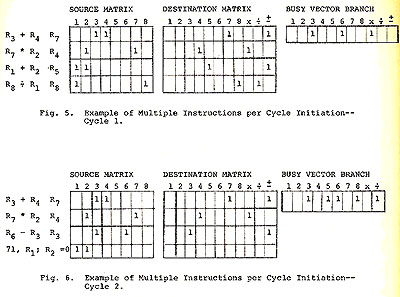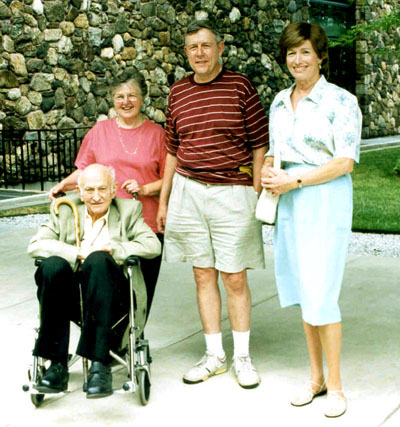|
|
|
|
|
|
|
|
|
|
Professor Conway received her B.S. and M.S.E.E.degrees from Columbia University in 1962 and 1963. She began her career at IBM Research at Yorktown Heights, NY, in 1964, moving on later to work at Memorex Corporation, at the Xerox Palo Alto Research Center (PARC), and at the Defense Advanced Research Project's Agency (DARPA). Concurrent with her work at Xerox PARC, she served as Visiting Associate Professor of EECS at M.I.T. in 1978-79. She joined the University of Michigan in 1985 as Professor of EECS and Associate Dean of the College of Engineering.
While at IBM, Ms.Conway made major contributions to supercomputer system architecture, including the invention in 1965 of generalized (multiple-decode, multiple-issue) "dynamic instruction scheduling", which was adopted in the IBM ACS-1 supercomputer's architecture. Although the ACS-1 project* was later cancelled and that machine never saw the light of day, Lynn's invention survived: Dynamic instruction scheduling has since become a classic hardware method for enhancing the performance of VLSI superscalar processors, such as those made by Intel, Sun, HP, MIPS and Compaq.
[*For information about this important IBM project, see Dr. Mark Smotherman's ACS retrospective at http://www.cs.clemson.edu/~mark/acs.html . The history of this secret IBM project is being constructed there with help from ACS veterans.]

|
|
Lynn then went on to work at Memorex Corporation from 1969-72. She rapidly climbed her way up the ladder as a digital systems designer and computer architect at Memorex, and was architect of the Memorex 7100 processor for the Memorex 30 computer system.
Lynn then joined Xerox Palo Alto Research Center (PARC) in 1973, where she went on to international recognition as a pioneer of computing and microelectronics for her innovations in VLSI chip design methods. In a collaboration with Prof. Carver Mead of Caltech from 1975-1980, Lynn inspired and led a team of colleagues and students at Xerox PARC and Caltech in research to bridge the knowledge gap between digital system architecture and microelectronics. This research produced a "structured VLSI design methodology" that was easy to teach and learn from the viewpoint of digital system architects and designers. Lynn then co-authored Introduction to VLSI Systems, which became the seminal textbook on modern chip design. She also created and taught the first modern VLSI design course based on that text, while serving as Visiting Associate Professor of EECS at M.I.T., in 1978-79.
A key element of the new design methodology was Lynn's invention of ratioed design rules that greatly simplified conceptualization of VLSI circuit layouts. Prof. Mead introduced Lynn's new "lambda-based" design rules into the design of the OM-2 computer at Caltech, which became the classic system design example used throughout the Mead-Conway textbook.
While at Xerox PARC, Ms. Conway also invented an internet-based infrastructure and protocols for efficient, rapid prototyping of large numbers of VLSI chip designs. Lynn's "MPC service" was prototyped and operated at PARC in 1979 and 1980 to support rapid prototyping of student chip designs at "Mead-Conway" design courses at many universities. This technology was transferred to the Information Sciences Institute (ISI) at USC in 1981, where it became known as the "MOSIS" service. ISI has operated and evolved MOSIS for the past 20 years with support from DARPA and NSF. It has long been a national infrastructure for rapid prototyping of VLSI chips by many universities and research organizations.
By successfully simplifying and demystifying the previously extremely complex process of silicon chip design, the work of the Mead-Conway team was largely responsible for the rapid progress in VLSI chip design and design tools in the 80's. Taken together, Lynn's many diverse contributions to computer architecture, VLSI design and internet-based chip-prototyping have greatly enhanced later progress in microelectronics, computing and information technology.
 |
|
In the early 1980's, Ms. Conway became a key technical architect and leader of planning of the Defense Department's Strategic Computing Initiative (SCI) at the Defense Advanced Research Projects Agency (DARPA), where she was Assistant Director for Strategic Computing as a member of DoD's Senior Executive Service (Lynn's rank was SES-4, the civilian equivanent to a 2-star general). SCI was a major research program in high-performance computing, machine intelligence technology, autonomous systems technology, and intelligent weapons technology during the 1980's. SCI was one of the U.S. government's major research initiatives to develop technical means to forestall Soviet aims during the height of the Cold War. While reporting to Dr.Robert Cooper, the Director of DARPA and Assistant Secretary of Defense, Lynn led the effort that produced the Strategic Computing Plan published in November, 1983.
 |
|
In 1985, Ms. Conway joined the University of Michigan, in Ann Arbor, MI. As Professor of EECS and Associate Dean in of Engineering, Prof. Conway contributed to many research and educational initiatives during the period of rapid expansion of the Engineering College onto the University's North Campus in the late 80's and early 90's. Her work included guiding College-wide efforts in instructional technology, and leading the conceptualization, planning and design of the Media Union, a large-scale technology-based information, library, design and study complex on the North Campus.
Her own research work in recent years focused on the emerging area of visual communications and control, probing for basic system and user interface concepts as applicable to hybridized internet/broadband-cable communications. She received five U.S. Patents for her visual communications inventions. Lynn retired from active faculty status in December, 1998 as Professor of EECS, Emerita.
Prof. Conway is a Fellow of the IEEE, and a member of the American Association for the Advancement of Science (AAAS) and the Association for Computing Machinery (ACM). She has served on many committee and boards, including the Editorial board of IEEE Spectrum magazine, numerous committees of the National Science Foundation and the National Academy of Engineering, and the U.S Air Force Scientific Advisory Board. She has served on the Board of Visitors of the U.S. Air Force Academy (a Presidential appointment), as a Member of the Corporation of the Draper Lab, as a Member of the Board of Directors of the Michigan Manufacturing Technology Council, a member of NASA's Office of Space Science Task Force on Technology Readiness, and as a Member of the Council of the Government-University-Industry Research Roundtable (GUIRR) and also of the Air Force Science and Technology Board of the National Academies. Current security clearance: Secret.
Among the many awards Professor Conway has received are the Wetherill Medal of the Franklin Institute, the Pender Award of the Moore School at the University of Pennsylvania, the Secretary of Defense Meritorious Achievement Award, the Electronics Award for Achievement, Xerox Corporation's recognition as a Xerox Research Fellow, the National Achievement Award of the Society of Women Engineers, an honorary doctorate from Trinity College, election to the Electronic Design Hall of Fame, election as a Fellow of the Institute of Electrical and Electronics Engineers (IEEE), and election to the National Academy of Engineering.
 |
|
|
|

|
|

|
|

|
|

|
|